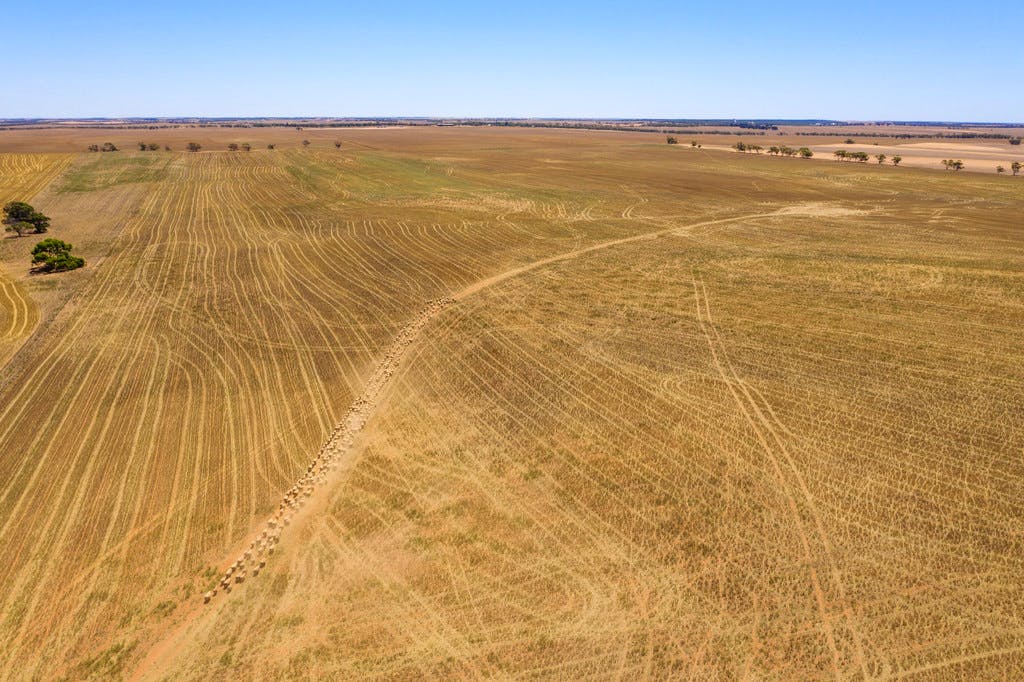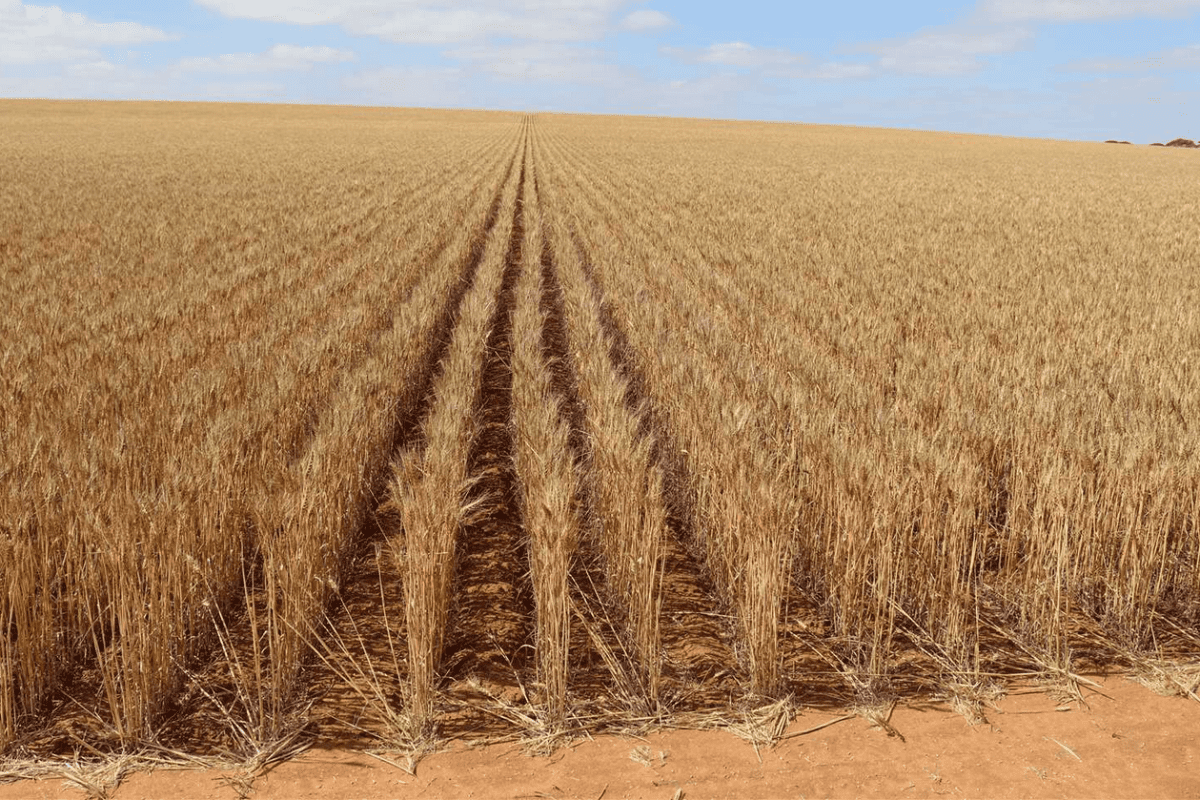
This Underbool block sold at auction last month for $3800/ha to set a new district record. Photo: Elders Mildura
PRICES for country in the Victorian Mallee are hitting new highs as mixed farmers from regions to the south look to secure area, the Excel Farms Canadian-Australian joint venture buys up big, and those established in the region look to expand.
As the word spreads about the merit of cropping in areas which bank on less than 300 millimetres of rain per year, strong values are bringing some properties to the market for the first time since they were developed in the 1920s.
However, the supply is not enough to satisfy demand, and new price records on Mallee properties large and small are being set in quick succession.
One of the latest was set by a 259-hectare block at Underbool offered by a family which has owned it since the 1930s.
It sold at auction on March 31 for $3800/ha to a neighbour. Agent for the sale Marty Deacon of Elders Mildura said the price was roughly double what it would have fetched two years ago.
“It had strong competition from away as well, and it shows you the enormous ripple effect that’s coming from southern and central Victoria, where farmers are seeing opportunities further north.”
Grain Central‘s last reported Underbool sale was at $1795/ha in 2017.
Mr Deacon said with cropping country in the Mallee available for as little as $3200/ha, southerners were keen on two main options for low-rainfall country.
“They can lease it out and land bank it on the idea its value will go up, and if they secure more over time, they can look at farming it themselves.
“It’s all because of what’s happened down south in places like Horsham and Hopetoun.”
Mr Deacon said farming country in those Wimmera districts was now selling for around $15,000/ha, and Mallee country offered excellent value, even where annual average rainfall was 260-270mm.
“The Mallee’s been discovered, and people want country in places like Millewa that have been overlooked for many many years.”
Mr Deacon said some of the families which have been in place since the 1920s and ’30s were now offering their farms to the market for the first time.
“Some of those old families aren’t wanting to go into to debt to buy more country, and this market is giving them an opportunity to move off, and for others to move in.”
Kingray, a Nutrien Harcourts Mildura listing at Morkalla in the Millewa district, is one example.
Owned by the Gray family since 1927, it covers 3192ha of red loamy Mallee country, and sold in December through an expressions-of-interest campaign.
Vendors Geoff and Julie Gray ran a continuous cropping and hay-production program including wheat, barley, oats, vetch and pulses on 1900ha and also a flock of 1000 merino ewes for prime lamb and wool production.
Excel volume buyer
Excel Farms is a joint venture between a Canadian fund and Australian private investors.
It fully owns and operates its Australian assets.
Excel Farms managing director Nick Paterson said it had been looking for property in the Mallee in the past six months or so to form its fourth aggregation.
Its other three are located in the Wimmera and Western Districts of Victoria, and in South Australia’s South-East, all put together in the past 18 months or so.
Mr Paterson said it ran some livestock in districts other than the Mallee, and the portfolio was not expected to extend into other states, with 10 per cent of the area in SA and the rest in Victoria.
“We’ve only been in the Mallee for about six months, and we’ll be continuous cropping with wheat, barley, canola, lentils and lupins.
“We’re dry sowing now into good subsoil moisture, but the next 30-day outlook is not very hopeful so it looks like it will be an average year.”
The Paterson family has media links, with Nick’s parents Rowly and Judy Paterson owning the ACE Radio Network in regional Victoria and southern NSW, and farming in south-west Victoria.
Mrs Paterson nee Handbury is Rupert Murdoch’s niece, but Grain Central understands there is no link between the Murdoch and Paterson businesses.
Reliable seasons
The Mallee has never been known for the bin-buster yields of regions like the Wimmera, or the south-west slopes, Liverpool Plains and Golden Triangle in New South Wales, where average annual rainfall is more like 600mm.
Those regions can comfortably produce dryland wheat and barley yields of 6t/ha or more in some years, compared with the Mallee’s average at more like 2-2.5t/ha, and north of 3t/ha in a bumper season.
The self-mulching clays of northern NSW, including the Golden Triangle and Liverpool Plains, are highly subject to El Niño–Southern Oscillation (ENSO) weather patterns, which delivered drought years of little to no production in 2017, 2018 and 2019.
While the country is undeniably productive and worth the high prices it fetches, the Mallee seems to be the front-runner for low-rainfall and low-input farming land in eastern Australia at present.
“What investors want is reliability,” one source said.
“That’s what the Mallee is good at, a flat line of returns versus boom, bust and a lot of averages in those higher-rainfall areas.”

The 2198ha property offered by the estate of Darren Abbetmeyer is under offer following an EOI campaign which closed in January. Photo: Nutrien Harcourts Mildura
Appeal in sandy soils
Nutrien Ag Solutions Manangatang-based agronomist Andrew McMahen said the Mallee’s soils were its blessing in dry years.
“Being quite sandy, they can nearly always grow a crop.
“I think more and more people are looking at the return on investment you can get here, and land values are probably catching up relative to other areas.
“People are looking at the reliability of it now.
“Our expectations aren’t as high as they are in other areas, but with summer spraying, direct drill and stubble retention, we can conserve every drop that falls.”
Mr McMahen said very low rainfall years on the Mallee like 2018 could see cereals yielding as little as 1-1.5t/ha, and frost damage as seen in 2019 couldn result in much of the crop being cut for hay.
Mallee growers received strong prices by selling grain and hay into the Queensland and NSW drought market in both years.
Mr McMahen said most of the properties selling in the Ouyen and Manangatang districts were selling to existing operators chasing more country in the current low-interest environment.
“Interest rates are low and people are cashed up, and everything of recent times is pretty much selling locally.”
Mr McMahen said the development of varieties has been an important factor in boosting the economics of farming in the Mallee.
“We’ve got shorter-season varieties now, so your grain is filling in the cooler period.”
Grain Central: Get our free cropping news straight to your inbox – Click here

HAVE YOUR SAY